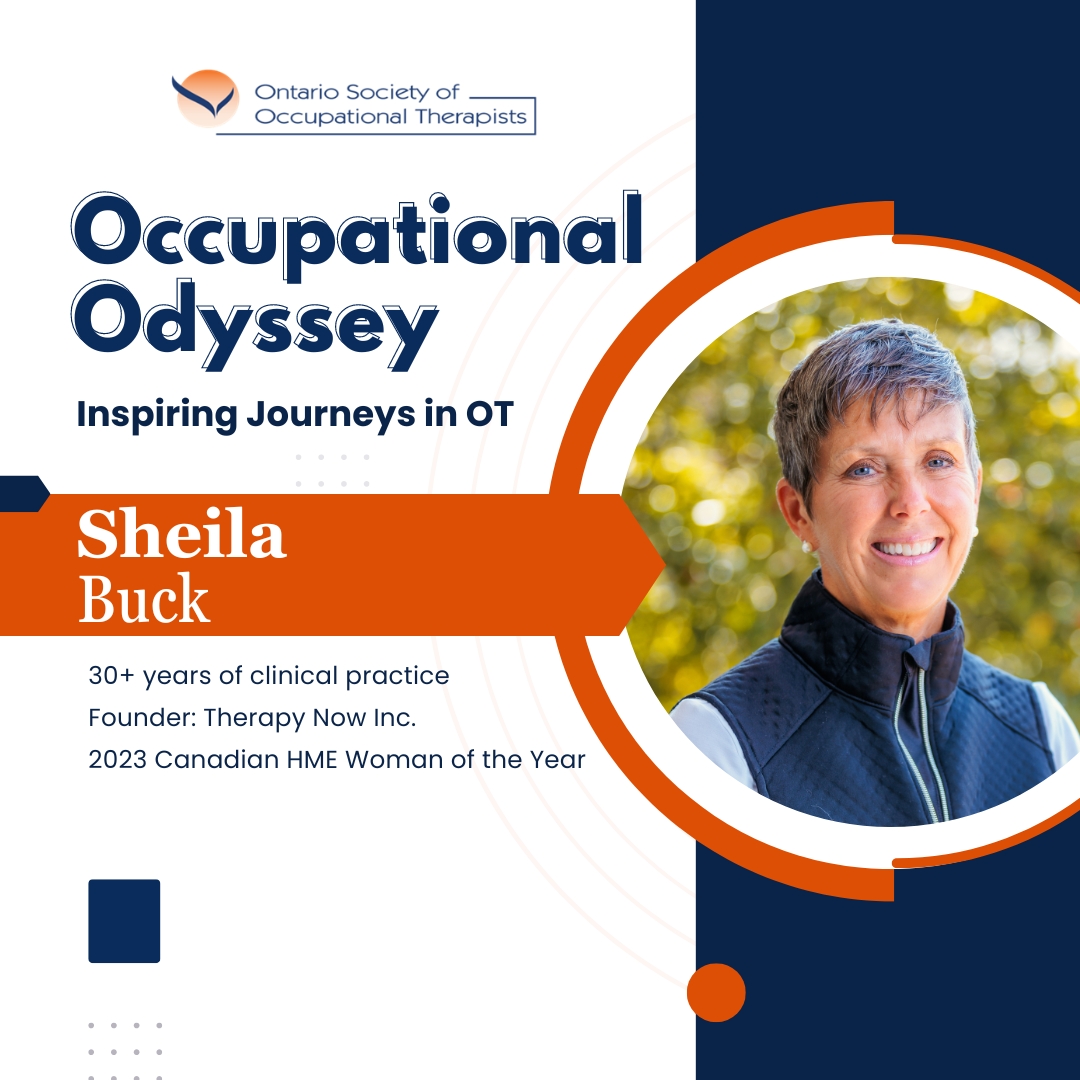Sheila Buck

As many of us in the field of occupational therapy did when I graduated in 1982, I often had to define and describe my role as an occupational therapist working in the hospital setting. I felt a disconnect with the wheelchairs and seating industry as to the understanding and knowledge of why it is important to complete a thorough physical assessment, combined with the physics and art of seating and mobility to justify the prescription. I, therefore, joined the industry as a sales consultant for 10 years with two vendors in the Greater Toronto area. This was a new role that not many occupational therapists had ventured into at the time. It was during this time that I started to present papers and workshops at industry conferences and developed an educational series on seating and mobility.
I realized that more occupational therapists were required in the community to provide thorough Seating and Mobility Assessments and, therefore, chose to start up my company, “Therapy NOW!” in 1997. Owning your own business was rare for occupational therapists at the time and was scary to venture out on my own without a guaranteed paycheck! My goal was to provide quality wheelchair and seating assessments and ongoing educational seminars to the community at large. The “NOW!” in “Therapy NOW!” is an acronym for “New Opportunities for Wellbeing” - meaning now, not tomorrow, but now when the timing is ripe! This has been my motto for my company ever since.
During this time, I also encouraged my parents to attend one of my local workshops to understand better how I could “speak for 2 days about a wheelchair”! They attended and at the end of the day, my mother announced, “Now I understand! A wheelchair is more than 4 wheels!” It suited to become the title of my book “More Than 4 Wheels: Applying Clinical Practice to Seating, Mobility and Assistive Technology”. This clinical guide reviews the practical and clinical side of the assessment and prescription of assistive technology with a focus on seating and mobility. It was a challenge to pull together all the papers I had written and, also provide a practical guide that clinicians could use in their daily practice. I found it challenging to develop a website (something new at the time) on which to begin my foray into social media and marketing and www.sheilabuck.ca was born.
My special needs grandson, inspired me to look at the psychology and sociology of providing therapy and equipment in a less invasive but fully supportive way. It was imperative to understand the need to reduce the fear of providing something new and different, that was potentially frightening or loathsome, to a life that is already disrupted by a traumatic birth, life event, or the changes related to aging. Sharing this knowledge through educational seminars helps to keep a focus on who our clients are and why it is so important for the client to understand the process rather than be the end recipient of something they had no say in at all.
This was not so poignant before I volunteered to join Team Canada Healing Hands and completed three trips to underprivileged countries to provide seating and mobility technology. It was a huge challenge to overcome my fears of providing assessment and assistive technology with very little technical support and donated devices that were far less than what I was used to. It was the understanding of their culture, environment, and occupations that allowed me to overcome my fears and provide mobility and seated support that worked for them.
My biggest challenge today is hearing therapists say they don’t have the time or money to attend educational sessions or complete a full seating and mobility assessment. Education is an investment in life and knowledge will not only enhance the lives of our clients but our own lives as well. If we become stagnant or complacent, then our clients suffer, and our assessments become longer and less efficient. Seating and mobility is such a unique and special interest in occupational therapy as it allows our clients to enhance their occupation of living in all facets of their lives. Can we afford not to learn more? Can we afford not to promote ourselves as being knowledgeable in this area? My hope and wish are that more occupational therapists decrease their fear of providing a thorough, hands-on seating and mobility assessment and device prescription by learning more about the complexities of such. In doing so, they provide clients with the basic right of functional and autonomous activity.